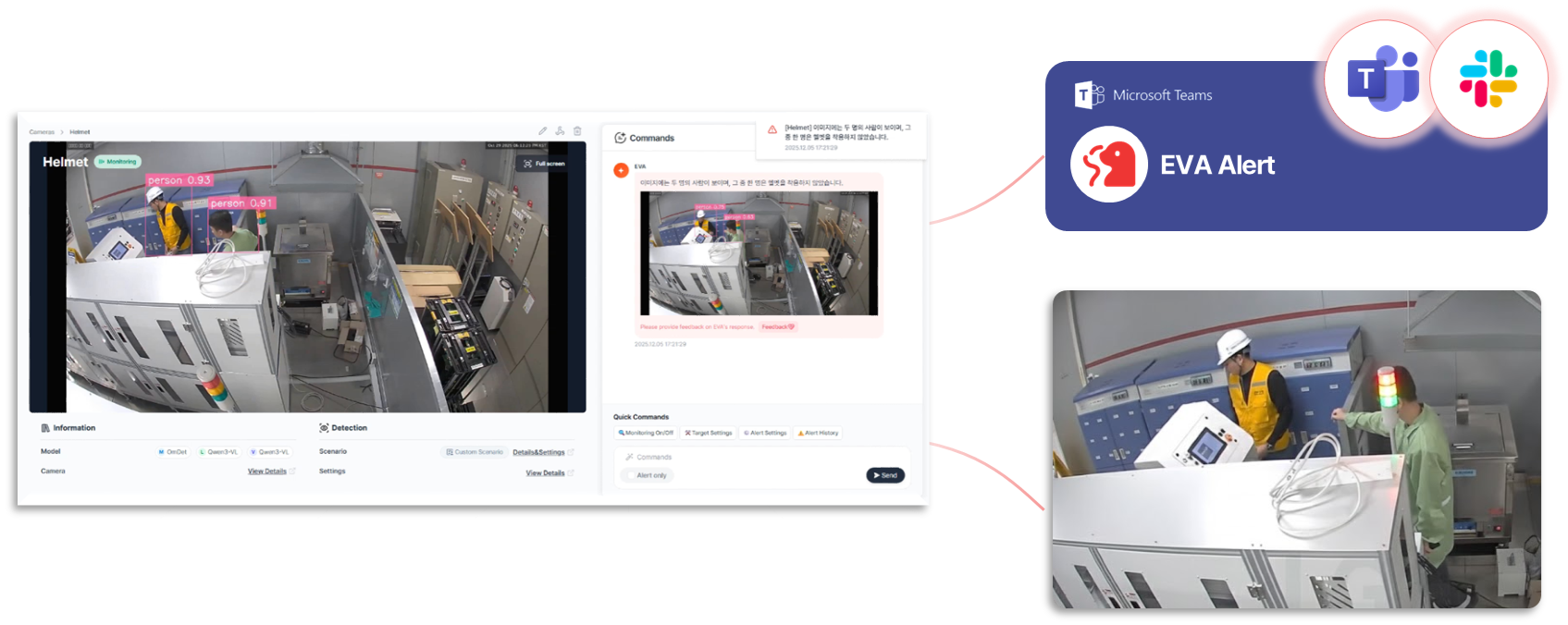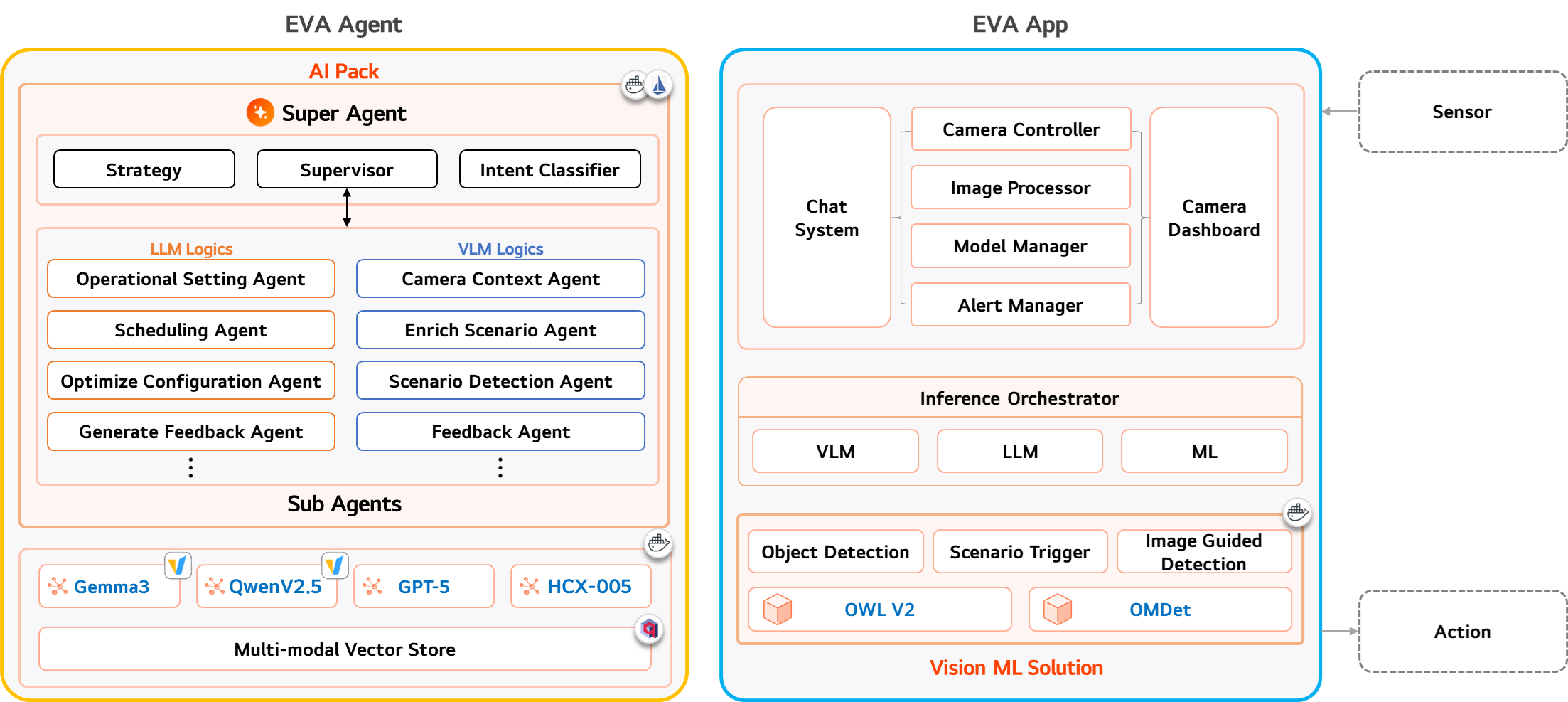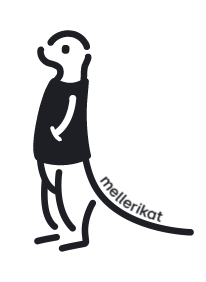EVA
EVA acts as a brain that connects with the entire physical world of industries, understanding and making autonomous decisions.
Through an intelligent flow from sensing to control, EVA transforms the physical world.
Seamless Connection to the Physical World
Enter a URL and create a scenario
Simply input a streaming URL (RTSP, HTTP) and write a detection scenario — it instantly becomes an AI-powered camera.
With simple sensor registration, EVA connects effortlessly to complex physical environments.
Video showing instant AI activation by registering a camera in EVA
Enhanced Intent with Scenario Intelligence
Create your goals simply as “scenarios”
EVA precisely interprets user intent through scenario-based configuration, improving efficiency and detection accuracy.
Video showing scenario-driven intent enhancement
Beyond Detection, Toward Action
A complete closed-loop that changes the real world
EVA understands the physical world and immediately applies results back into reality, enabling full intelligent closed-loop control.
It not only sends alerts through various communication channels, but also connects directly with physical devices
— lights, gates, robots — to control environments in real time.

A Physical AI Platform for All Industries
EVA — The brain linking understanding to action in the real world
EVA acts as an autonomous brain connected to every physical environment in industry.
Through a continuous flow of sensing to control, it transforms the physical world.
Check out various use cases on the Usecase page.
Video showing multi-domain scenario detection and alerting
Simple Field Customization
Region-Based Detection
With a simple mouse drag, users can set a Region of Interest (ROI).
EVA focuses detection only inside the selected area, eliminating unnecessary noise and drastically reducing false alarms.
Image-Guided Detection for Domain-Specialized Accuracy
No complex coding, data collection, or labeling needed.
Just show EVA what to detect — and it automatically adapts the model to your environment.
AI that Evolves with Feedback
EVA continuously improves detection by learning from user feedback.
It evolves to make more accurate decisions in similar future situations,
minimizing false alarms and becoming fully optimized for each site.
Service Architecture
Efficient and Powerful System Design
EVA is a platform built upon a multi-intelligence structure that integrates various advanced foundation models.
Vision-Language Models (VLM), Large Language Models (LLM), and Vision Foundation Models operate independently yet complementarily.
With high scalability, users can flexibly choose and combine the optimal AI stack for their environment.

A Unified Flow of Sensing → Understanding → Control
EVA App connects with the physical world to recognize environments in real time,
EVA Agent interprets with optimal foundation models to deliver deep understanding,
and decisions are immediately executed through device-level control.
This converts industrial sites, cities, and facilities into fully autonomous Physical AI systems.
Learn More
EVA is deployed through collaborations with various partners. Explore real case applications and up-to-date documentation below.
Case Study & Usecase
Discover real implementation benefits at Why EVA.
Partnership
We collaborate with industry leaders including Cisco,Naver Cloud, Megazone, and more.
Documents
Check the Manual andRelease Notes for details and updates.
